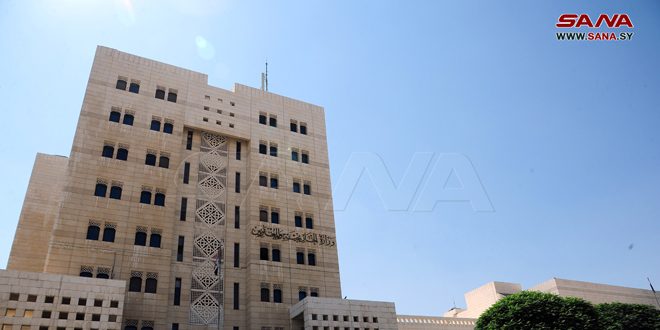The Liberation and Construction Movement within the Syrian National Army has announced a leadership change, appointing Ahmed Ihsan Fayyad al-Hayes, also known as Abu Hatem Shakra, as its new leader, replacing Colonel Hussein al-Hammadi. It is noteworthy that Hayes is currently listed on US sanctions lists, despite this, he has been selected to lead the movement.
This movement resulted from the merger of four factions within the Syrian National Army, primarily originating from the eastern region of Syria (Deir-ez-Zor – Raqqa – Hasakeh). Its establishment was officially declared in February 2022 and comprises the factions of Ahrar al-Sharqiya, Jaish al-Sharqiya, Division 20, and Suqour al-Sham (Northern Sector), as outlined in its founding statement.
Upon its formation, Colonel Hammadi of Jaish al-Sharqiya initially assumed the role of the general command of the Liberation and Construction Movement. Ahrar al-Sharqiya’s commander, Abu Hatem Shakra, was concurrently appointed as his deputy.
For the Third Day: Assad’s Forces Kill Nine Civilians in Idleb and Aleppo
The movement assigns a U.S. sanctioned person to lead it
In Monady’s statement, the movement announced the appointment of Abu Hatem Shakra as its leader, with the former leader, Hammadi, assuming responsibility for the political wing. The position of deputy leader was assigned to Abu Barzan, while the military wing will be led by Abu Arab.
It’s important to note that in July 2021, the US Treasury Department imposed sanctions on the Ahrar al-Sharqiya faction, part of the National Army. Ahrar al-Sharqiya was accused of various human rights violations, including the illegal killing of Kurdish politician Havrin Khalaf and other civilians in northeastern Syria. The faction was also implicated in kidnappings, torture, confiscation of private property, and preventing displaced Syrians from returning home.
The sanctions extended to Abu Hatem Shakra, who is accused of involvement in numerous human rights violations. He allegedly led the Ahrar al-Sharqiya prison outside Aleppo, where hundreds were executed since 2018. He was also implicated in smuggling Yazidi women and children and integrating former ISIS members into the faction.
Despite these sanctions, leaders of the Syrian National Army expressed discontent, considering the classification unfair and emphasizing the faction’s role in defending Syrian civilians against terrorism and tyranny, urging reliance on reports from independent human rights and legal committees.
What are the possible consequences for the Movement?
Regarding the repercussions of appointing a sanctioned individual to lead the Liberation and Construction Movement, journalist Samer al-Ani highlighted the potential risks faced by the movement following its recent decision. Ani emphasized that designating a leader under sanctions might expose the entire movement to classification, affecting all factions operating within it.
Explaining the rationale behind choosing Shakra for the leadership role, Ani, in an interview with Syria TV, pointed out that the movement comprises four factions. Among the leaders of these factions, Colonel Hammadi is the sole officer and is considered the most capable of leadership. However, Hammadi had expressed a desire to be relieved of the position multiple times, creating a dilemma for the Movement.
This article was translated and edited by The Syrian Observer. The Syrian Observer has not verified the content of this story. Responsibility for the information and views set out in this article lies entirely with the author.


